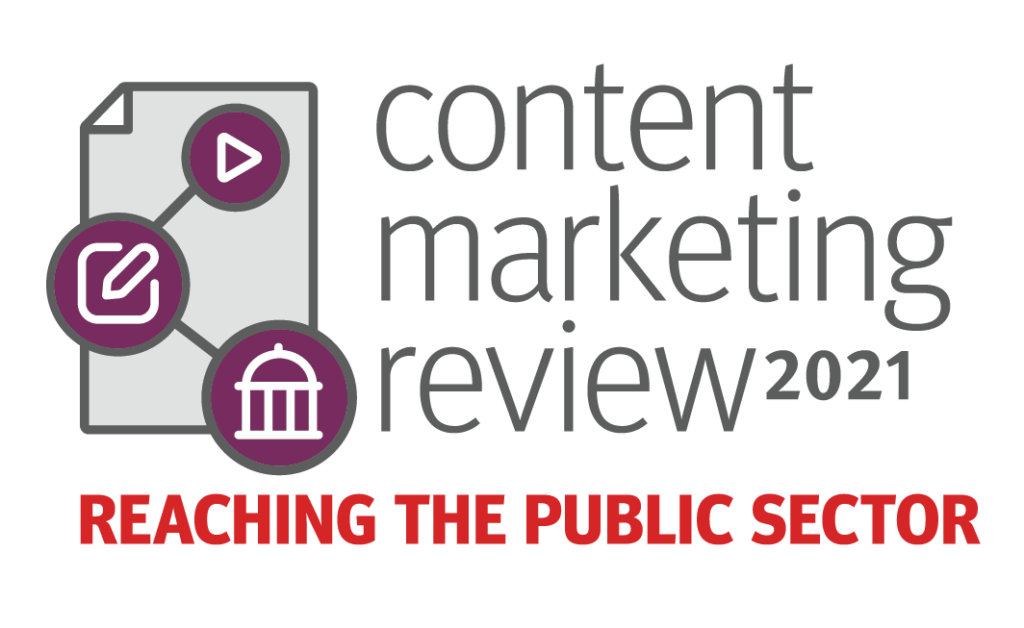
Last month I was a panelist for a public sector content marketing study conducted by Market Connections. Market Connections is a highly respected research firm focused on B2G and B2B markets and I was honored to be on their panel of experienced content creators.
 Market Connections polled over 600 government decision-makers at federal, state and local agencies and with K-12 and higher education institutions around the country. Respondents were evenly split between the three government levels. There are so many formats content can take, and it’s critical to understand what types of marketing assets public sector decision makers find most useful.
Market Connections polled over 600 government decision-makers at federal, state and local agencies and with K-12 and higher education institutions around the country. Respondents were evenly split between the three government levels. There are so many formats content can take, and it’s critical to understand what types of marketing assets public sector decision makers find most useful.
There were two panels for the webinar, one with content creators and one with public sector marketers. That panel discussion was moderated by Aaron Heffron, President of Market Connections. The panelists were Monica Mayk of Verizon Business, Betsey Morrow of Amazon Web Services and Preston Smith from Cisco.
My panel was moderated by Lou Anne Brossman, Founder and CEO of Government Marketing University and I’m proud to say an old friend. Also on the panel was Matt Donovan, SVP at the Merritt Group, which was a sponsor of the study and webinar. We shared out thoughts on the findings and tried to add some additional insights.
Often there can be a disconnect between the content marketers want to provide and the content decision-makers want to consume. Such a disconnect was uncovered by a Market Connections report in 2015.
Across all public sector respondents valued content that aligned with their interests. Matt and I both thought of customer personas when we saw those results, and a validation of how valuable they can be when crafting thought-leadership content. Those personas in turn then become foundational resources for account based marketing (ABM) campaigns.
Data and research, trials/demos and proof of past performance content also ranked highly in the study. Matt and Lou Anne both referred to this as “show me” rather than “tell me” content that was especially important for federal decision-makers. I agreed, but pointed out that type of content is lower down in the sales funnel and gated. You need to educate at first and can’t go for the close too early in your content, especially when an estimated 75 percent of the sales process is done before a prospect ever makes contact – the so-called Dark Funnel.
We also noted the widely different rankings for white papers vs. eBooks, thinking it might be a semantic difference. As marketers we viewed eBooks simply as a shorter, more visually appealing version of a white paper but the term seems to have a branding problem with public sector audiences. This being the case I’m going to advise my clients to expand their definition of the term white paper and use that term in general for their longer form content.
I detected what might be a disconnect in the disparate rankings of SEO and blog posts. SEO relevance was ranked highly while blog posts were not. While blog posts may have ranked lower on content type for respondents when looking to educate themselves for purchasing decisions, government marketers cannot ignore their blogs. That’s because blogs are a key part of an owned media strategy that help company content achieve a strong organic SEO ranking.
Each finalist was asked to share just one useful and tactical tip. Mine was a reminder about using the Audience Interests data in Google Analytics to guide your content development. Simply going to Audiences/Interests/Affinity Categories will provide valuable data on the kind of visitors visiting your site, and the kind of content they want from you.
The research report is available for purchase here. It’s only $199 and worth every penny.
Hey Chris, excellent recap of what was a timely and informative panel discussion. My only suggestion is that it would have been great to have more time dedicated to the important role syndication plays in the content process. Marketers tend to reply on organic social promotion, SEO, paid search, and limited social media advertising. Let’s encourage more innovation and creativity when it comes to putting content in front of key buyers.
Disclosure: my company recently introduced a content syndication offering to reach buyers in government, financial services, insurance, healthcare, education, and retail. There is no charge to use it! https://contentplusinsight.com/